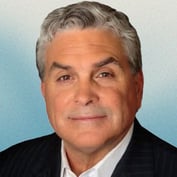What You Need to Know
- Research shows the average RIA firm has doubled its assets under advisement over the past five years.
- Not all firms are growing equally, however, and there are some key themes separating the best from the rest.
- Among the best ways for firms to supercharge growth is to create more strategic approaches to referrals and talent acquisition.
The second day of the Charles Schwab Impact 2022 conference featured a presentation on the firm’s recently published RIA Benchmarking Study, given by Jerry Cobb, Charles Schwab director and business management consultant, and Jay Wampler, TD Ameritrade director and business development consultant.
As Cobb and Wampler noted, the annual benchmarking study, now published in its 16th edition, is based on a survey of more than 1,000 RIA practice leaders, with responding firms ranging in size, geography and business models. Split into two parts, the 2022 edition of the study first considers the growth and performance metrics of RIA firms before turning to a focus on compensation and staffing strategies.
As Cobb pointed out, the research suggests RIAs are thriving, despite some of the recent challenges in the U.S. and global markets. Over the past five years, the study shows, the average responding firm has doubled its assets under advisement, reaching some $545 million in average AUA as of the end of 2021. However, not all firms are growing equally, and there are some key themes separating the best from the rest.
A Strategic Growth Approach Distinguishes Top RIAs
“One finding that stands out is that organic growth hit five-year highs last year, highlighting the tremendous demand that exists for the services of RIAs,” Cobb said. “Something else that stands out is that, if we look at our top-performing firm index, we see that advisors of all sizes and in all lifecycle stages are experiencing success. We see that the key to success, in turn, is embracing some critical best practices.”
Cobb pointed to data showing the fastest growing firms report relying heavily on documented business development plans and specific, measurable business development initiatives. For example, one practice most fast-growing firms have in common is the development and use of an “ideal client persona” that guides their strategic decision-making.
“We see in the survey that this development of an ideal client persona helps a firm tailor its messaging and make the tough decisions about how to organize and deliver a differentiating, quality client experience,” Cobb said. “Related to this point, the best firms have articulated a client value proposition that is both clearly defined and consciously communicated to prospects and clients.”
According to the data, the creation of a comprehensive marketing plan that integrates these two elements and proactively communicates them to prospects and clients is invaluable for faster growth. The top firms also have documented and measurable plans for generating referrals from existing clients and significant centers of influence.
“Firms with this approach win more clients and win more assets,” Cobb said. “It’s very clear in the data.”
Cobb said many firms in the lower performance tiers “merely rely on the work they are doing” and the force of the reputation they have established by serving clients to drive business growth. The data shows this passive growth strategy is effective to an extent, but the fastest-growing firms are doing a lot more.
“It is true that clients will stand up for you if you are doing a good job meeting their needs, but this passive approach only gets you so far in 2022,” Cobb said. “To supercharge growth, RIAs need a well-defined and measurable processes for generating referrals, as well as a methodology for actively engaging with the most important centers of influence in their markets.”
With respect to internal operations, Cobb said, the most successful RIAs are leaning into new digital capabilities, especially in the client onboarding and portfolio monitoring processes.
“The data suggests success on this front is about standardizing processes, efficiently managing workflows and honestly confronting and managing enterprise risk,” Cobb concluded. “The top firms are investing in all of these areas to create and maintain scale. They spend substantially less time per client, annually, on their operations, and this frees up time for both client service and business development.”












 Copyright © 2024 ALM Global, LLC. All Rights Reserved.
Copyright © 2024 ALM Global, LLC. All Rights Reserved.